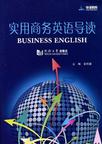实用商务英语导读
2009-5
同济大学出版社
金玲慧 主编
271
当今世界商务活动日益活跃,全球化经济对培养国际化的复合型人才提出越来越高的要求。国内许多高等职业学校都开设有商务英语专业,其他的经济、管理专业的学生也将商务英语作为专业课开设。但是,大多数商务英语教科书依然侧重语言的教学,而不是强调用英语作为工具去捕捉商务信息,本书旨在弥补商务英语教材此方面的不足。一方面,帮助经济、管理类专业的学生提高用英语阅读专业知识的能力;另一方面,帮助商务英语专业的学生利用语言的优势学习商务知识。商务英语涉及面广,专业性强,教材编写难度大。普通的经贸英语教材一般局限于某一特定领域,例如金融、贸易等,给人见木不见林的感觉。直接引进的英文教材虽原汁原味,但起点过高,不能有针对性地提高中国学生的商务英语水平。 本书充分考虑到目前在校高职、高专学生的知识结构、心理特点以及高职教育的功能、特点等要素,进行了科学的目标定位。强调以培养学生职业能力为主旨,在学习商务基础知识的基础上,注重学生运用英语的交际能力和处理业务的技能,培养学生用英语捕捉经济信息的能力。按照实际商务运作程序和岗位职责内容整合传统的商务英语教学内容,从经济学角度,设计出模块化教学的模式。全书共10章,涉及市场营销、国际贸易、会计、金融、电子商务、管理、服务、旅游、沟通和全球化等10个教学模块。理论教学内容根据近年引进版的经济学教科书和外报、外刊选取,广度和深度的把握上以“必须、够用”为原则。实践教学内容则以商务领域从业人员所需的职业技能为核心,坚持理论与实训环节的衔接和融合。 本教材的使用对象为商务英语专业的学生,以及经济、管理类专业的学生。各校可以根据学生的实际水平和培养计划的设计,安排在二年级或三年级开设。教学时数可以用60到90个学时。书中的主题来源于真实的商务活动场景,符合社会和职业发展的实际需要,我们希望通过此书的教学,帮助学生缩短适应社会的“磨合期”。 本书的单元编写模式突破陈规,每个单元分为学习目标,主题阅读,课文注释,实训操练和专业术语几个部分。学习目标使学生在学习某一个单元前就清楚本单元的学习内容,这样学生会有目的地进行学习,从而提高学习效果。课文注释提供语言知识在商务场景中的理解,在提高学生语言运用能力的同时,促进其在商务情景中的交际。实训内容联系商务实践,通过对任务的完成来进行技能训练。专业术语从商务的角度,归纳课文中重要的专业词汇,帮助学生加深对各个模块商务知识的理解。
本书按照实际的商务运作程序和岗位职责内容整合传统的商务英语教学内容,从商务活动出发设计模块化教学的模式。内容涉及营销与营销组合、商品与国际贸易、会计与财务报表、金融与金融市场、网络与网络营销、管理者与管理原理、服务与服务管理、旅游与旅游管理、商务活动与人际沟通以及商务活动与全球化环境10个部分。 每一个模块中除了安排“课文”来介绍各种商务活动以外,还包括“学习目标”、“本章小结”、“课文注释”、“实训”和“专业术语”几个部分。各个模块整合在一起,是一个完整的体系,商务英语专业的学生可以从中学到各个领域的商务知识。但是,各个模块又相对独立,方便其他经济、管理类专业的学生学习用英语捕捉商务信息。 教材图文并茂,引人人胜。别具一格的形式易于激发学生的学习兴趣,发挥学习的主观能动性。 本教材的教学对象为商务英语专业和其他各类经济、管理类专业的学生。本书作为高职教材,也适合应用型本科、成人高校经济管理类专业学生使用。
Chapter One Marketing and Marketing Mix 1.1 Overview of Marketing 1.2 Strategic Marketing Planning 1.3 Product Decisions 1.4 Distribution Decisions 1.5 Promotion Decisions 1.6 Pricing Decisions 实训一 营销计划书分析Chapter Two Commodities and InternationaI Trade 2.1 0verview of International Trade 2.2 Terms of Commodity 2.3 International Cargo Transport 2.4 Ocean Marine Insurance 2.5 International Payment and Settlement 2.6 HOW to Write Sales Contract 实训二 信用证分析Chapter Three Accounting and Financial Statements 3.1 Accounting--the Language of Business 3.2 Basic Elements of Financial Position and the Accounting Equation 3.3 Generally Accepted Accounting Principles 3.4 Double—Entry System 3.5 Financial Statements 实训三 会计与会计报表Chapter Four Finance and Financial Markets 4.1 Foreign Exchange&Exchange Rate 4.2 Foreign Exchange Transaction 4.3 The Balance of Payments 4.4 International Financial Market 实训四 金融与金融市场Chapter Five Internet and E-Marketing 5.1 E—Marketing 5.2 E—marketing Planning 5.3 E—marketing Strategies 5.4 E—marketing Environment 实训五 网络与网络营销Chapter Six Managers and Management 6.1 Managers 6.2 Managerial Roles 6.3 Management 6.4 Management Levels 6.5 Management Skills 实训六 管理与管理者Chapter Seven Service and Service Management 7.1 Understanding Services 7.2 Building the Service System 7.3 Operating the Service System 7.4 Nonprofit Service Organization 实训七 服务机构选择Chapter Eight Tourism and Tourism Management 8.1 Travel and Tourism 8.2 Accommodation and Transportation 8.3 Entertainment 8.4 Frontier 实训八 设计旅游线路Chapter Nine Business and Interpersonal Skills 9.1 Communication Channel 9.2 Presentation 9.3 Negotiation 9.4 Teamwork 实训九 商务活动与人际沟通Chapter Ten Business and GIobaIization 10.1 Overview of Globalization 10.2 The Strategies of Globalization 10.3 Managing Global Marketing 实训十 全球化与商务活动
1.6.2 Setting the Right Price Setting the right price on a product is a four-step process. (1) Establish pricing goals The first step in setting the right price is to establish pricing goals. Pricingobjectives fall into three categories, profit oriented, sales oriented, and status quo.These goals are derived from the firms overall objectives. If, for example, a companysobjective is to be the dominant sales leader in an industry, then it will pursue a sale-oriented market share pricing goal. A conservative organization that is attempting tolower risks by being a follower, rather than attempting to be a market leader, mayestablish a status quo goal. This company is simply trying to preserve its position in themarketplace. Finally, a company committed to maximizing shareholder value willestablish aggressive profit-oriented pricing goals. (2) Estimate demand, costs, and profits Total revenue is a function of price and quantity demanded and that quantitydemanded depends on elasticity. [30] After establishing pricing goals, managers shouldestimate total revenue at a variety of prices. Next, they should determine correspondingcosts for each price. They are then ready to estimate how much profit, if any, and howmuch market share can be earned at eaeh possible price. These data become the heart ofthe developing price policy. Managers can study the options in light of revenues, costs,and profits. In turn, this information can help determine which price can best meet thefirms pricing goals. (3) Choose a price strategy The basic, long-term pricing framework for a good or service should be a logicalextension of the pricing objectives. The marketing managers chosen price strategydefines the initial price and gives direction for price movements over the product lifecycle. The price strategy sets a competitive price in a specific market segment, based on awell-defined positioning strategy. Changing a price level from premium tosuperpremium may require a change in the product itself, the target customers served,the promotional strategy, or the distribution channels. Thus, changing a price strategycan require dramatic alterations in the marketing mix. A companys freedom in pricing a new product and devising a price strategydepends on the market conditions and the other elements of the marketing mix. If a firmlaunches a new item resembling several others already on the market, its pricingfreedom will be restricted. To succeed, the company will probably have to charge aprice close to the average market price.

外教推荐的,个人觉得那些非英语、非管理专业的人要是想考个什么BEC的就刚刚适合用来学习关于商务英语的基本知识~
不是那种很厚的书,200来页吧,正品,外教老师指定我们买的,质量内容挺好,不会太难,也不会太容易
我们现在上课就用的这个做练习用哦,很好
觉得能学到不少,推荐
课文的专业术语涉及较多,并有中文的句子解释,对提高经济方面文章的阅读能力很有帮助!
还不错,就是看起来有点旧的感觉!